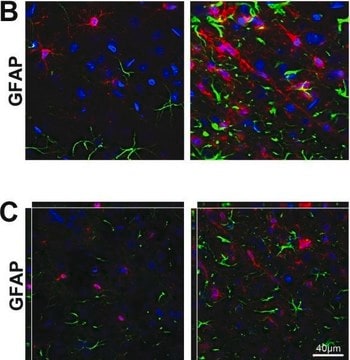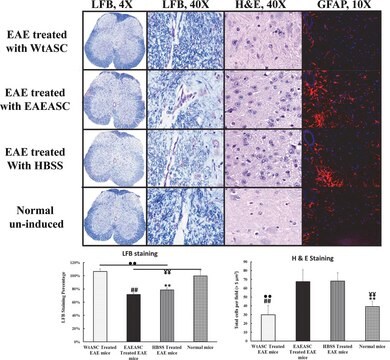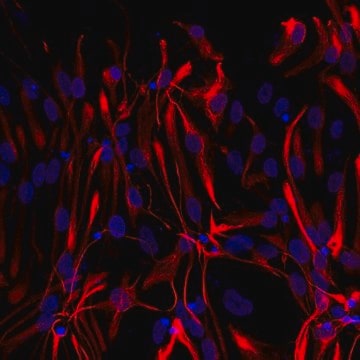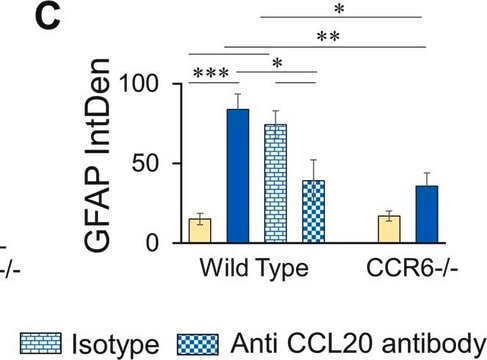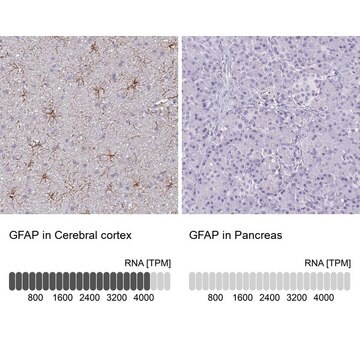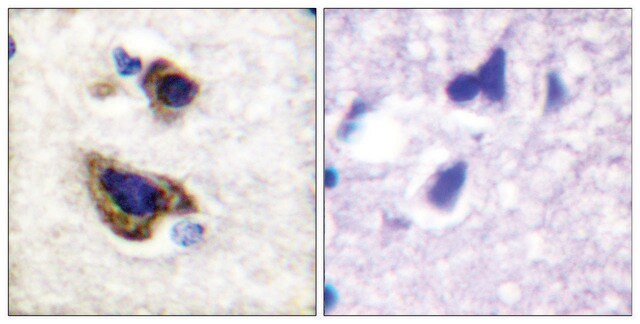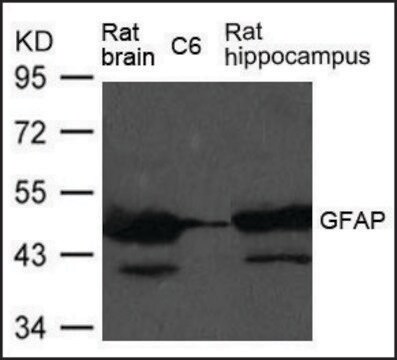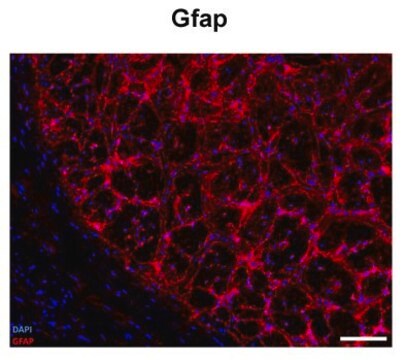G6171
Anti-Glial Fibrillary Acidic Protein Antibody
mouse monoclonal, G-A-5
Sinónimos:
Anti-GFAP
About This Item
Productos recomendados
Nombre del producto
Anti-Glial Fibrillary Acidic Protein antibody, Mouse monoclonal, clone G-A-5, purified from hybridoma cell culture
origen biológico
mouse
Nivel de calidad
conjugado
unconjugated
forma del anticuerpo
purified from hybridoma cell culture
purified immunoglobulin
tipo de anticuerpo
primary antibodies
clon
G-A-5, monoclonal
Formulario
buffered aqueous solution
mol peso
antigen ~50 kDa
reactividad de especies
rat, human, pig
concentración
~1.0 mg/mL
técnicas
immunocytochemistry: suitable
immunohistochemistry: suitable
indirect immunofluorescence: 2.5-5 μg/mL using alcohol-fixed sections of rat brain/cerebellum.
western blot: suitable
isotipo
IgG1
Nº de acceso UniProt
Condiciones de envío
dry ice
temp. de almacenamiento
−20°C
modificación del objetivo postraduccional
unmodified
Información sobre el gen
human ... GFAP(2670)
mouse ... Gfap(14580)
pig ... GFAP(396562)
rat ... Gfap(24387)
Categorías relacionadas
Descripción general
Inmunógeno
Aplicación
Acciones bioquímicas o fisiológicas
Forma física
Cláusula de descargo de responsabilidad
¿No encuentra el producto adecuado?
Pruebe nuestro Herramienta de selección de productos.
Opcional
anticuerpo
Código de clase de almacenamiento
10 - Combustible liquids
Punto de inflamabilidad (°F)
Not applicable
Punto de inflamabilidad (°C)
Not applicable
Elija entre una de las versiones más recientes:
¿Ya tiene este producto?
Encuentre la documentación para los productos que ha comprado recientemente en la Biblioteca de documentos.
Los clientes también vieron
Nuestro equipo de científicos tiene experiencia en todas las áreas de investigación: Ciencias de la vida, Ciencia de los materiales, Síntesis química, Cromatografía, Analítica y muchas otras.
Póngase en contacto con el Servicio técnico
